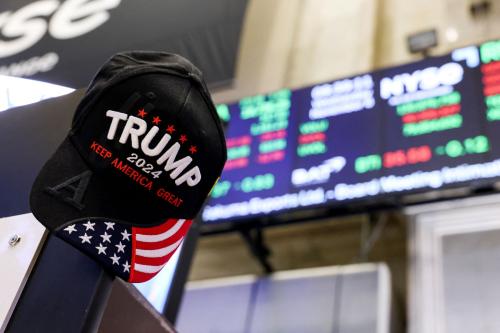One of the big stories of the G-20 meeting this week is the on-going narrative of unfair currency manipulation. An undervalued yuan, we are told, is being pursued by China to protect its jobs in export industries, but at the cost of jobs in other countries around the world, especially the United States. This narrative is accepted wisdom and repeated widely in the mainstream U.S. media. The key debate is whether the Chinese can be persuaded—through pressure or a grand bargain with other chips, like more votes in the IMF—to back off from its currency policy and allow the demand and jobs to be “rebalanced” to other countries.
With this as background, I was interested to read the new International Labor Organization (ILO) report on jobs in G-20 countries that has just been released. That report shows the sectors where jobs have been created and lost over the last year (2010 versus 2009; either Q1/Q1 or Q2/Q2 depending on the country) for each G-20 country. I expected to find a confirmation of the prevailing narrative, namely continued job losses for the U.S. in manufacturing and job gains for China in manufacturing. Much to my surprise, the data show the exact opposite. In fact, China actually lost manufacturing jobs in 2010 compared to 2009 (and remember that 2009 was when the Chinese export collapse happened, so the base was already low); while the U.S. actually gained jobs in manufacturing. The opposite is true in non-tradable sectors like construction, retail trade, and financial services. In those sectors, the U.S. lost jobs while China gained jobs. For economists, the Chinese pattern of job creation in non-tradables and job losses in tradable sectors (manufacturing) is a classic example of an appreciation in the real exchange rate—something the Chinese are accused of not allowing to happen.
But perhaps the issue with the Chinese yuan manipulation is not about the competition between the U.S. and China (after all, everyone knows that the U.S. produces quite different goods and services than the Chinese) but about competition between China and other emerging economies like Brazil and Turkey. Maybe these countries lost out because of the unfair yuan rate. Luckily, the ILO has data on these countries as well (except India). Brazil, Korea, Mexico and Turkey all had gains in manufacturing employment. Only South Africa had losses, and those may well be related to its history of strong trade union activism in setting wages in the formal sector.
So which countries besides China had job losses in manufacturing? All the European countries, Australia and Japan, which are traditionally countries that compete fiercely with the United States. Despite the prevailing narrative, maybe the facts on jobs suggest that adjustment is already happening.
The Brookings Institution is committed to quality, independence, and impact.
We are supported by a diverse array of funders. In line with our values and policies, each Brookings publication represents the sole views of its author(s).



Commentary
On the Chinese Currency Issue: Narrative and Reality
November 10, 2010